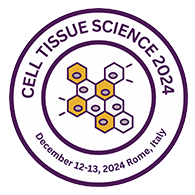Mast cells
A mastocyte cell (also called a mast cell or a labrocyte may be a resident cell of animal tissue that contains several granules wealthy in aminoalkane and anticoagulant. Specifically, it's a kind of WBC derived from the myeloid somatic cell that's a region of the immune and neuroimmune systems. Mast cells were discovered by bacteriologist in 1877 though best identified for his or her role in hypersensitivity reaction and hypersensitivity reaction; mast cells play a vital protecting role also, being intimately concerned in wound healing, growth, immune tolerance, defense against pathogens, and vascular porosity in brain tumors. The somatic cell is incredibly similar in each look and performance to the white corpuscle, another form of white vegetative cell. Though mast cells were once thought to be tissue resident basophils, it's been shown that the 2 cells develop from completely different hematogenic lineages and so can't be equivalent cells.
Related Conference of Mast cells
Mast cells Conference Speakers
Recommended Sessions
- 3D Bioprinting in tissue engineering
- Applications of Tissue Engineering
- Artificial Organs
- Bio Banking
- Bio fabrication & 3 D-Bio printing in Life Sciences
- Biochips and Tissue Chips
- Biomaterials Engineering
- Biomedical Engineering Techniques
- Bone and Cartilage Tissue Engineering
- Bone Tissue Engineering
- Cell and Organ Regeneration
- Cell Science
- Cell Therapy
- Cellular and gene Therapies
- Dendritic cells
- Gene and Immunotherapy
- Mast cells
- Materials and Designs for Tissue Engineering
- Soft Tissue Replacement
- Tissue Culture & Preservation
- Tissue Repair and Regeneration
- Tissue Science
Related Journals
Are you interested in
- 3D Structure Determination - Structural Biology-2026 (France)
- Advanced Techniques in Structural Biology - Structural Biology-2026 (France)
- AI & Computational Structural Biology - Structural Biology-2026 (France)
- Biochemistry and Biophysics - Structural Biology-2026 (France)
- Computational Approach in Structural Biology - Structural Biology-2026 (France)
- Drug Designing and Biomarkers - Structural Biology-2026 (France)
- Hybrid Approaches for Structure Prediction - Structural Biology-2026 (France)
- Membrane Proteins and Receptors - Structural Biology-2026 (France)
- Molecular Modelling and Dynamics - Structural Biology-2026 (France)
- Proteomics and Genomics - Structural Biology-2026 (France)
- Structural Bioinformatics and Computational Biology - Structural Biology-2026 (France)
- Structural Biology in Cancer Research - Structural Biology-2026 (France)
- Structural Virology - Structural Biology-2026 (France)
- Structural Virology and Infectious Diseases - Structural Biology-2026 (France)
- Structure-Based Drug Discovery - Structural Biology-2026 (France)
- Structure-Based Solutions to Global Health Challenges - Structural Biology-2026 (France)
- Structure-Function Relationships - Structural Biology-2026 (France)
- The Structural Basis of Disease - Structural Biology-2026 (France)

